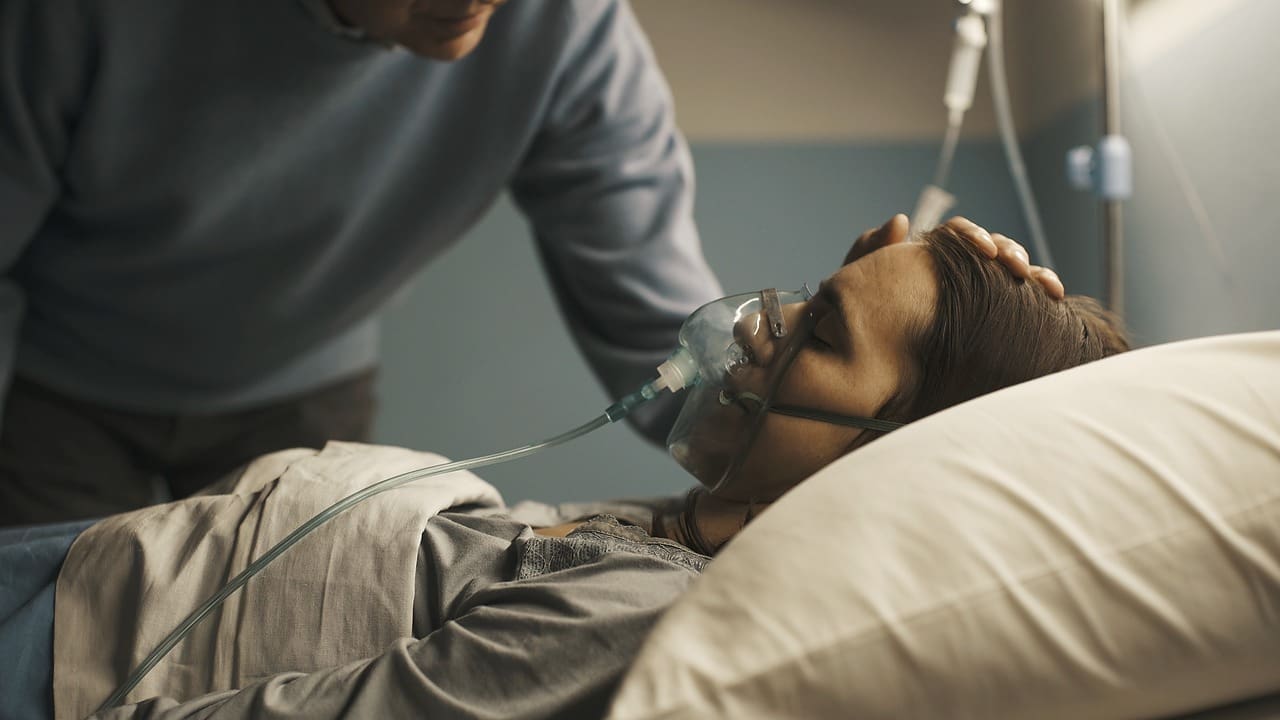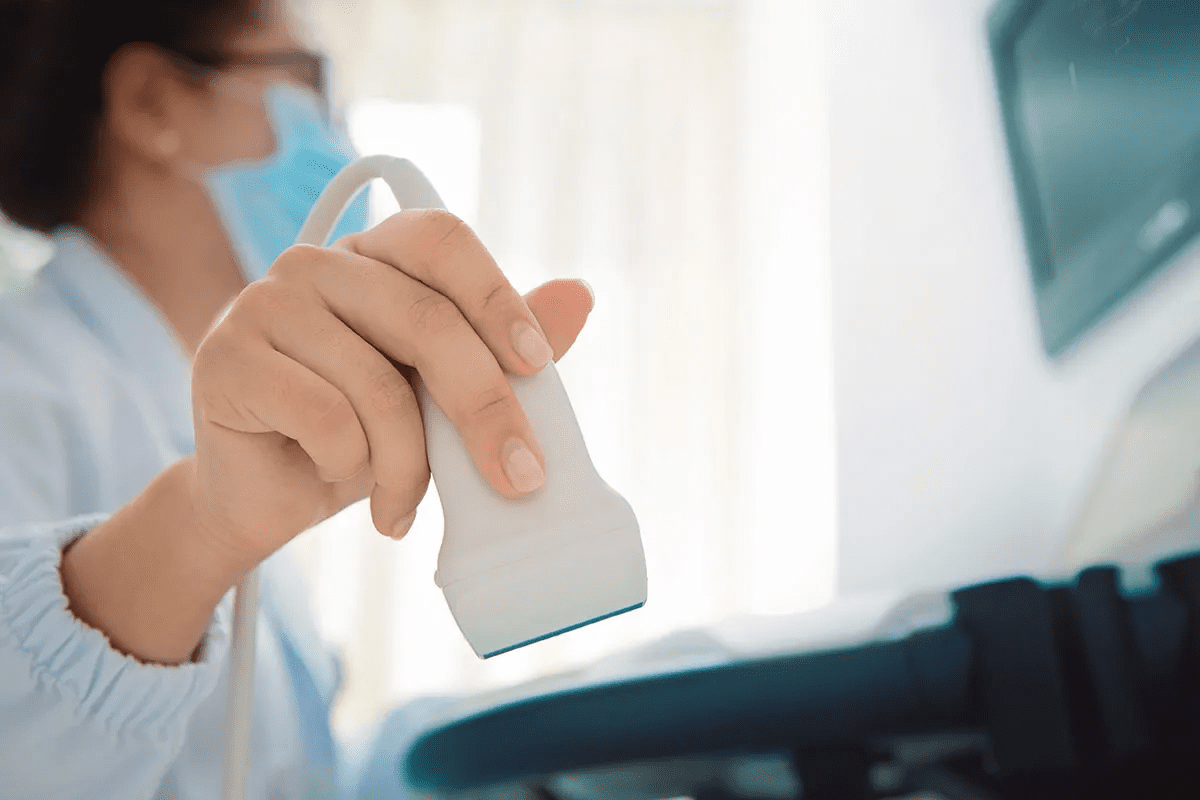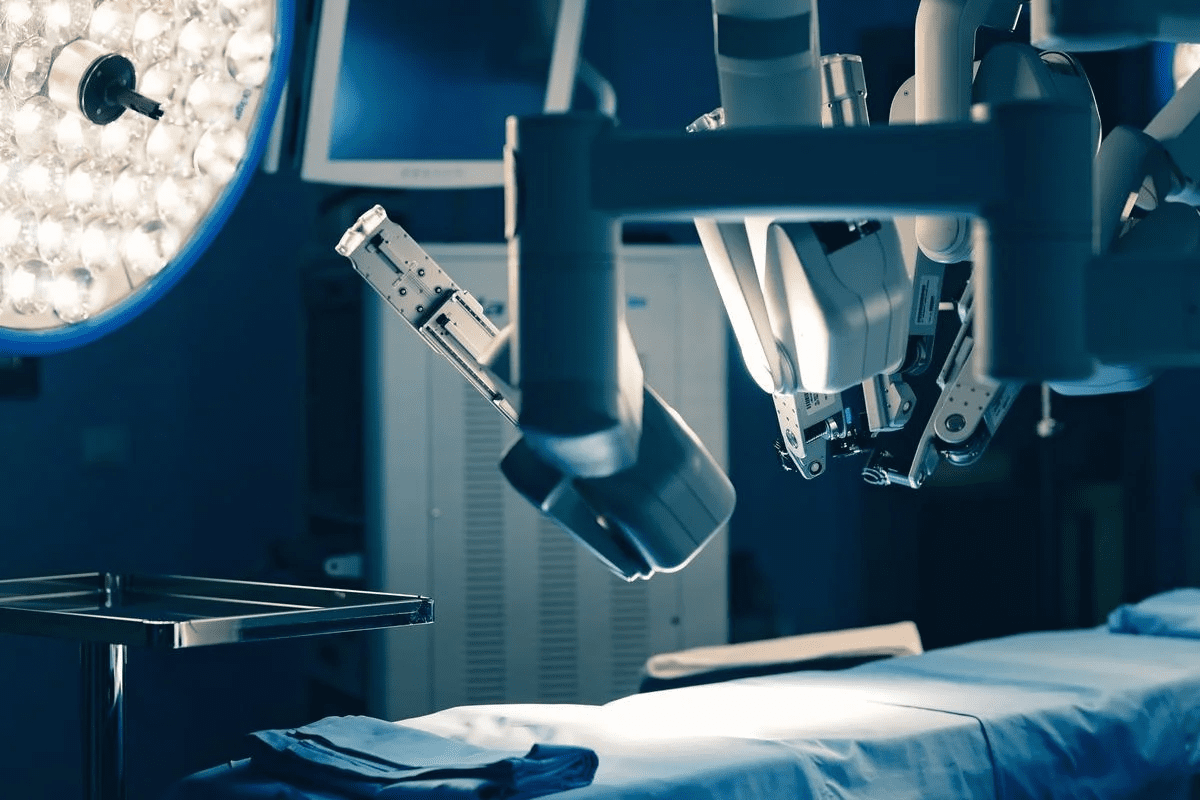Last Updated on November 27, 2025 by Bilal Hasdemir
Knowing about the radiation dose of dental x-rays is key for both patients and dental professionals. At Liv Hospital, we focus on keeping our patients safe and informed. We make sure they understand the procedures we do.
A single digital dental x-ray has a very low radiation exposure, about 0.2 microsieverts. For comparison, people in the U.S. get around 3 mSv of natural radiation each year.
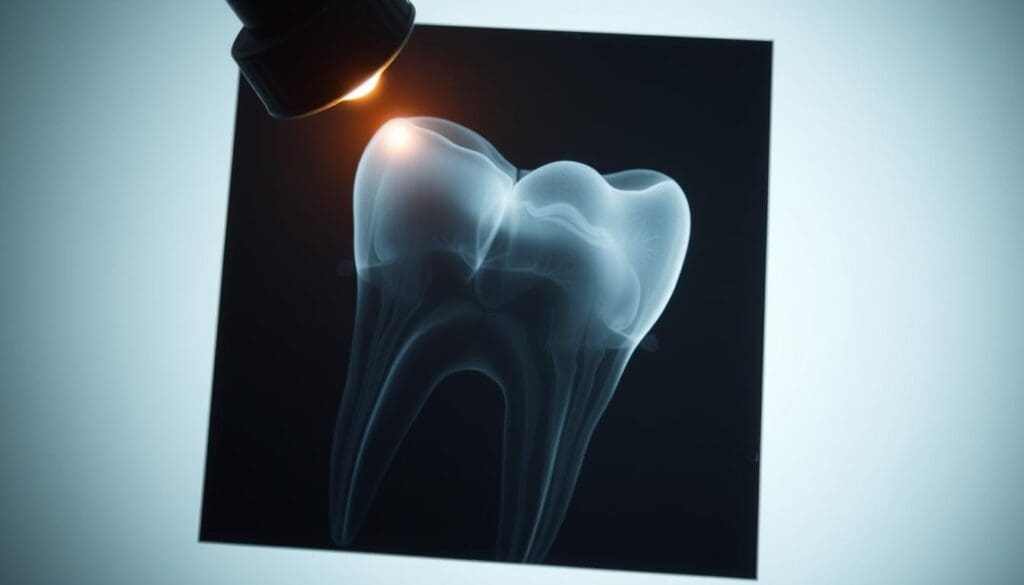
We will look at 7 important facts about the dental x ray radiation dose. These facts are based on science and are designed to ease worries while explaining the safety measures we take to protect patients. The radiation dose from dental x-rays is very low, often less than the daily natural background radiation, ensuring patient safety during necessary diagnostic procedures.
Key Takeaways
- Digital dental x-rays deliver a very low radiation dose.
- The average annual radiation exposure from natural sources is significantly higher.
- Modern dental x-ray technology prioritizes patient safety.
- Liv Hospital adheres to stringent safety protocols.
- Understanding radiation doses can alleviate patient concerns.
- Dental x-rays are a vital diagnostic tool.
- Safety measures are in place to minimize exposure.
What You Need to Know About X-Radiation
X-radiation is key in dental imaging. It’s important to understand how it works. When we get dental X-rays, we’re exposed to a controlled amount of X-radiation. This is a type of ionizing radiation.
Knowing about this exposure is vital. It helps us see if dental imaging is safe and effective.
1. Understanding How Radiation Is Measured
The millisievert (mSv) is the scientific unit for whole body radiation dose. It shows how much radiation our bodies absorb during X-rays. Dental X-rays use microsieverts (μSv) or millisieverts (mSv), with 1 mSv being 1,000 μSv.
Let’s compare dental X-ray doses to other radiation sources. A chest X-ray has about 10 μSv. Flying from New York to Los Angeles exposes us to around 30 μSv of cosmic radiation.

Different Types of Dental Imaging Procedures
Dental imaging includes various procedures, each with its own use and radiation dose. Intraoral radiography takes X-rays inside the mouth. Extraoral radiography takes X-rays outside the mouth.
- Intraoral Radiography: This includes bitewing X-rays, periapical X-rays, and occlusal X-rays. These are used for detailed examination of teeth and surrounding bone.
- Extraoral Radiography: This category includes panoramic X-rays and cephalometric X-rays. Panoramic X-rays provide a broad view of the upper and lower jaw in a single image.
Each procedure has a different radiation dose. We’ll look at these in more detail next.
Dental X-Ray Radiation Dose: Specific Levels Explained
Dental X-rays are safe thanks to the low radiation doses they use. We’ll look at the doses for different X-ray types to understand their safety.
Digital Dental X-Rays: Only 0.2 Microsieverts
Digital dental X-rays are a big step forward. They use much less radiation than old film X-rays. One digital dental X-ray gives about 0.2 microsieverts.
0.2 microsieverts is like the radiation from a few hours of normal background radiation.
Bitewing X-Rays: Minimal Exposure at 0.005 Millisieverts
Bitewing X-rays check the spaces between teeth and the bone. They have a very low dose, about 0.005 millisieverts. This is like the radiation from a short flight.
Full-Mouth Series and Panoramic (Pano) X-Rays
Full-mouth series or panoramic X-rays give a detailed view of teeth. They have a bit higher dose, about 0.025 millisieverts.
| Dental X-Ray Procedure | Radiation Dose (millisieverts) | Equivalent Background Radiation |
| Digital Dental X-Ray | 0.0002 | A few hours |
| Bitewing X-Ray | 0.005 | A short flight |
| Full-Mouth Series/Panoramic X-Ray | 0.025 | A few days |
“The use of digital X-rays has revolutionized dental imaging by significantly reducing radiation exposure to patients.”
-A leading dental professional
Advanced Dental Imaging and Radiation Exposure
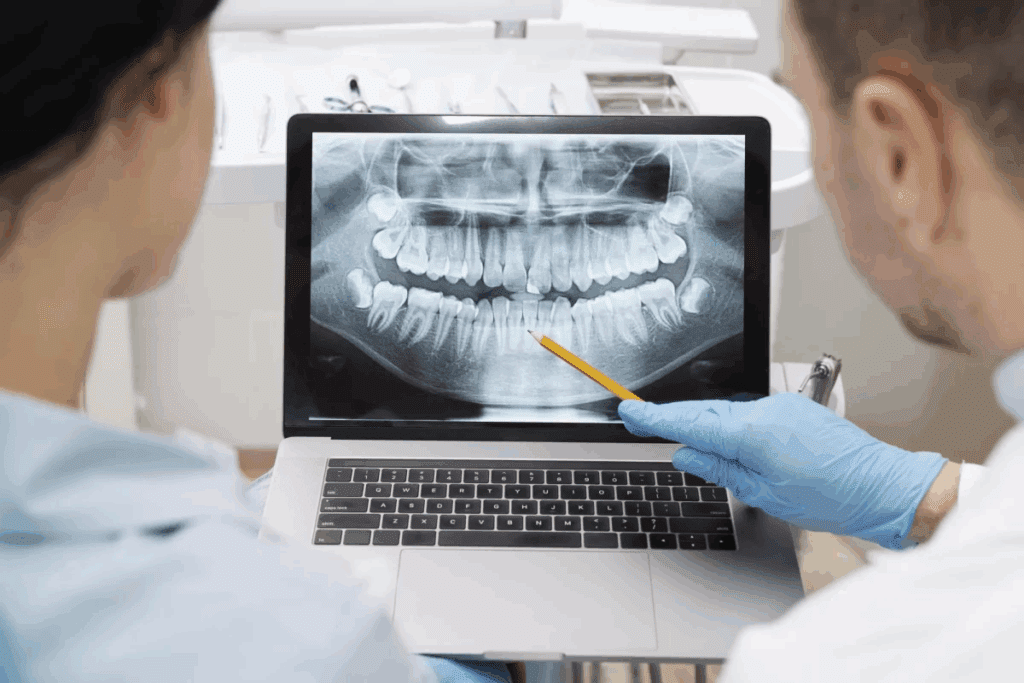
Modern dentistry uses advanced imaging like CBCT, but it raises concerns about radiation. It’s important to understand the radiation from these techniques as we improve our diagnostics.
Cone-Beam Computed Tomography (CBCT) Radiation Levels
CBCT scans are a big step forward in dental imaging, giving us detailed 3D views. But, they do give more radiation than regular dental X-rays. The dose from a CBCT scan can be between 50 to 100 microsieverts, depending on the scan size.
To understand better, here are some facts:
- A small volume CBCT scan might expose a patient to around 50 microsieverts.
- A larger volume scan could result in exposure up to 100 microsieverts or slightly more.
These doses are much higher than standard dental X-rays. This is something to think about when choosing imaging techniques.
How CT Radiation Levels Compare to Standard Dental X-Rays
CBCT scans give off more radiation than standard dental X-rays. Standard dental X-rays, like bitewing or periapical X-rays, expose patients to much lower doses. They are usually around 0.005 millisieverts (or 5 microsieverts) per exposure. CBCT scans, on the other hand, can expose patients to doses several times higher, depending on the scan’s field of view and technology used.
Dental professionals need to think about the benefits of CBCT scans and the increased radiation. They should consider the patient’s needs and choose other imaging techniques when possible. This helps ensure patients get the needed info while keeping radiation exposure low.
In summary, while CBCT scans are great for diagnostics, their radiation exposure is something to think about. By knowing the radiation levels from these advanced techniques and comparing them to standard dental X-rays, we can make choices that balance needs with safety.
Contextualizing Dental X-Ray Safety
By comparing dental X-rays to daily background radiation, we understand their safety better. We’re always exposed to low levels of radiation from natural sources like cosmic rays and radon in the air.
6. Dental X-Rays vs. Daily Background Radiation Exposure
The average person gets about 3 millisieverts (mSv) of radiation each year from natural sources. A single dental X-ray might expose a patient to around 0.01 mSv. This is like a few days of normal background radiation.
A full-mouth series of X-rays, which is more detailed, exposes a patient to about 0.15 mSv. This is also very low compared to the yearly background radiation dose. Knowing this helps ease worries about dental X-rays.
7. Research-Backed Safety of Modern Dental Imaging
Modern dental imaging, like digital X-rays and CBCT, has been thoroughly researched for safety. These technologies have low radiation doses that keep getting lower as they improve. For instance, digital X-rays cut exposure by up to 90% compared to old film-based X-rays.
The safety of dental imaging also follows the ALARA principle. This means dental professionals aim to use the least amount of radiation needed. This, along with new technology, keeps patients safe from too much radiation.
In summary, when we look at dental X-rays in relation to daily background radiation and the research on modern dental imaging, we see they are safe and important for our teeth.
Conclusion: Making Informed Decisions About Dental X-Rays
Knowing about the radiation from dental x-rays is key to smart dental care choices. We’ve looked at different dental imaging, like digital x-rays and panoramic x-rays. We’ve talked about how much radiation each one uses.
Dental x-rays, including panoramic ones, are very important for checking your teeth. They use very little radiation, making them safe. Understanding this helps you feel better about getting x-rays and talking to your dentist.
When you think about the good x-rays do versus the small amount of radiation, you can make better choices. We suggest talking to your dentist about what x-rays you need. This way, you get the right info for your teeth while keeping radiation low.
FAQ
What is the typical radiation dose from a dental x-ray?
Dental x-rays give off very little radiation, often in microsieverts (μSv). For example, a digital dental x-ray has a dose of about 0.2 μSv. A panoramic x-ray’s dose is around 14-24 μSv.
How does the radiation dose from dental x-rays compare to natural background radiation?
Dental x-rays have a low radiation dose compared to natural background radiation. The average daily background radiation is 8-10 μSv. So, a single dental x-ray is like a small part of a day’s background radiation.
Are digital dental x-rays safer than traditional film x-rays?
Yes, digital dental x-rays are safer. They use less radiation than traditional film x-rays. Digital x-rays can cut radiation doses by up to 90%.
What is the radiation dose from a full-mouth series of dental x-rays?
A full-mouth series of dental x-rays has a dose of about 150-200 μSv for digital x-rays. This is very low, similar to a few days of natural background radiation.
How does the radiation dose from CBCT compare to standard dental x-rays?
CBCT scans have a higher radiation dose than standard dental x-rays. Their doses range from 30-1000 μSv or more, depending on the scan and settings.
Are dental x-rays safe for children?
Yes, dental x-rays are safe for children when used carefully. This includes using digital x-rays and thyroid collars to reduce exposure.
Can I reduce my radiation exposure from dental x-rays?
Yes, you can lower your radiation exposure from dental x-rays. Make sure your dentist uses digital x-rays. Also, limit the number of x-rays and use safety measures like thyroid collars.
What is the unit of measurement for radiation dose in dental x-rays?
Dental x-rays measure radiation dose in sieverts (Sv) or microsieverts (μSv). Millisieverts (mSv) are used for higher doses.
References
Su, X., et al. (2022). A review of doses for dental imaging in 2010–2020 and development of a web-based dose calculator. Frontiers in Oral Health / PMC. https://www.ncbi.nlm.nih.gov/pmc/articles/PMC8767401/


